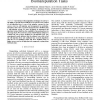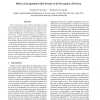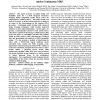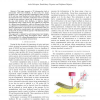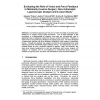HAPTICS
2006
IEEE
14 years 5 months ago
2006
IEEE
Conventional cell manipulation techniques do not have the ability to provide force feedback to an operator. Poor control of cell injection force is one of the primary reasons for l...
SMC
2007
IEEE
14 years 5 months ago
2007
IEEE
—Most virtual reality simulators are designed for complex medical procedures, such as laparoscopic surgery. While important, these simulators are of use for only a subset of spec...
HAPTICS
2007
IEEE
14 years 5 months ago
2007
IEEE
This work focuses on the relative importance of skin stretch imposed on the fingerpad on the perception of friction. Perceptual data is presented from two separate tests. The fi...
ICRA
2008
IEEE
14 years 5 months ago
2008
IEEE
— This paper presents an initial design and feasibility study for a 1-DOF Magnetic Resonance Imaging (MRI) compatible needle driver robot for radiofrequency ablation (RFA). This ...
IROS
2009
IEEE
14 years 6 months ago
2009
IEEE
— This paper presents a 2D teleoperation task at microscales with force feedback. At this scale, two major problems arise while performing manipulation tasks: the lack of 3D real...
MICCAI
2003
Springer
15 years 9 days ago
2003
Springer
: Conventional laparoscopic tools do not have the ability of providing force feedback to a surgeon during surgical procedures. Loss of haptic feedback in MIS procedures is a disadv...
MICCAI
2002
Springer
15 years 9 days ago
2002
Springer
In this paper, we present a study that evaluates the effect of visual and haptic feedbacks and their relevance to human performance in a needle insertion task. A virtual needle ins...
